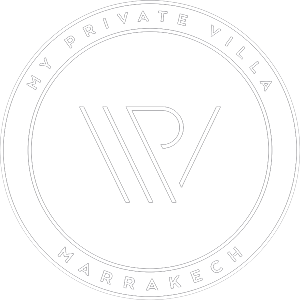Everything You Need to Know About Co-ownership in Morocco: Complete Guide for Owners and Future Buyers

Table of Contents:
1.Introduction: What is co-ownership?
2.Private and common areas
3.The co-ownership regulations: the building's charter
4.The co-owners' association: collective management
5.The general assembly: decision-making power
6.Co-ownership charges: what you must pay
7.Rights and obligations of co-owners
8.Procedures in case of disputes
9.New features introduced by Law No. 106-12
10.Conclusion: Co-ownership, a solid legal framework
Co-ownership is an increasingly common form of property management in Morocco, particularly in major cities such as Casablanca, Rabat, and Marrakech. Whether you own an apartment, villa, or commercial space in a co-owned building, or are considering acquiring one, it is essential to understand the rules governing this status. Law No. 18-00 regarding the status of co-ownership of built buildings, promulgated by Dahir No. 1-02-298 of October 3, 2002, and amended by Law No. 106-12 in 2016, regulates this type of ownership. In this article, we will decode this law in an educational manner to help you better understand your rights and obligations as a co-owner.
1.What is co-ownership?
Co-ownership is a legal system that allows multiple people to share ownership of a building. Each owner holds a private portion (apartment, commercial space, villa) as well as a share of the common areas (stairs, elevators, gardens, etc.). This system is particularly suited to buildings divided into apartments or spaces, but it can also apply to real estate complexes composed of villas or adjoining buildings.
Concrete example: If you buy an apartment in a building, you become the owner of your living space (private area) and you share ownership of the common areas with the other co-owners.
2.Private and common areas
The law clearly distinguishes between private and common areas: Private areas: These are spaces reserved for the exclusive use of a co-owner. They generally include apartments, commercial spaces, or villas. The land on which the building is constructed and the annexed gardens are also considered private areas, particularly for villas. Common areas: These spaces are intended for the use of all co-owners. They include:
- The main structure of the building (foundations, load-bearing walls, roofs).
- Stairs, corridors, elevators, and entrances.
- Common equipment (heating, antennas, etc.).
- Courtyards, gardens, and premises intended for common use.
Note: Walls and partitions separating two private areas are also considered common areas, unless otherwise stipulated in the property titles.
3.The co-ownership regulations: the building's charter
The co-ownership regulations are an essential document that defines the rules for living in and managing the building. It is mandatory for any co-owned building and must be established by the original owner or the co-owners. This document includes in particular:
- The purpose of private and common areas (residential, commercial use, etc.).
- Rules for managing common areas.
- The distribution of each co-owner's share in the common areas.
- The procedures for appointing the property manager (building manager).
- Charges related to the maintenance and management of the co-ownership.
Advice: Before buying a property in co-ownership, ask to consult the co-ownership regulations. It will give you a clear vision of the rules in force and the charges to anticipate.
4.The co-owners' association: collective management
All co-owners of a building are automatically members of the co-owners' association, an entity with legal personhood and financial autonomy. The association's mission is to manage the common areas, ensure the maintenance of the building, and make decisions necessary for its proper functioning.
The main missions of the association:
- Conservation and maintenance of common areas.
- Management of collective services (elevators, lighting, etc.).
- Representation of co-owners in court if necessary.
The property manager: The association is administered by a property manager, who may be a co-owner or an external professional (building manager). The property manager is responsible for executing decisions made by the general assembly of co-owners, collecting fees, and maintaining accounts.
5.The general assembly: decision-making power
The general assembly is the decision-making body of the co-ownership. It meets at least once a year to approve the budget, set charges, and make important decisions regarding the management of the building.
Decisions made in the general assembly:
- By simple majority: Building maintenance, installation of common equipment (antennas, satellite dishes), accommodation for people with disabilities.
- By three-quarters majority: Carrying out improvement works, appointing or removing the property manager, approving the budget.
- Unanimously: Demolition of the building, raising the height, creating new spaces.
Advice: Actively participate in general assemblies to make your voice heard and take part in decisions that impact your daily life.
6.Co-ownership charges: what you must pay
Each co-owner is required to participate in co-ownership charges, which cover expenses related to the maintenance and management of the building. These charges are distributed according to each owner's share in the common areas. The main charges:
- General charges: Maintenance of common areas, repairs, insurance.
- Special charges: Collective services (elevators, heating, water).
- Provisions for works: Reserve for major maintenance or renovation works.
To know: If a co-owner does not pay their charges, the property manager can initiate a payment injunction procedure before the court.
7.Rights and obligations of co-owners
As a co-owner, you have rights and obligations: Your rights:
- Use and enjoy your private area according to its purpose.
- Participate in general assemblies and vote on decisions.
- Access the archives and records of the association. Your obligations:
- Respect the co-ownership regulations.
- Pay co-ownership charges.
- Authorize work necessary for the maintenance of the building, even if it concerns your private area.
8.Procedures in case of disputes
The law provides mechanisms to resolve disputes between co-owners or with the association. In case of disagreement, you can refer to the competent court of first instance. Appeals against decisions of the general assembly must be filed within two months of their notification.
Example of a dispute: If you believe your share of charges is too high, you can request a review before the court.
9.New features introduced by Law No. 106-12
Law No. 106-12, promulgated in 2016, introduced several important modifications to strengthen the protection of co-owners and improve the management of buildings. Among the main new features:
Creation of a reserve account: To deal with unusual or urgent expenses.
Appointment of a provisional administrator: In case of management difficulties, the court can appoint a provisional administrator to rectify the situation.
Strengthening co-owners' rights: Better transparency in the management of charges and decisions.
Conclusion: Co-ownership, a solid legal framework
Co-ownership in Morocco is regulated by robust legislation that protects the rights of owners while ensuring effective management of buildings. Whether you are already a co-owner or are considering becoming one, it is crucial to clearly understand your rights and obligations to avoid disputes and ensure harmonious cohabitation.


